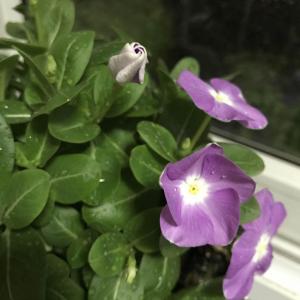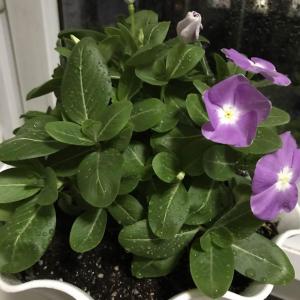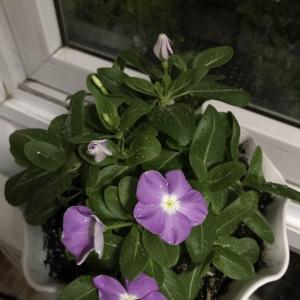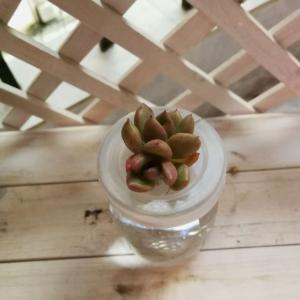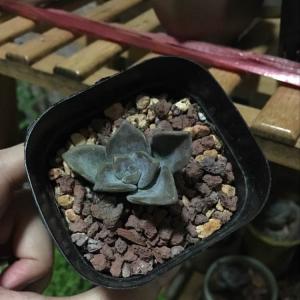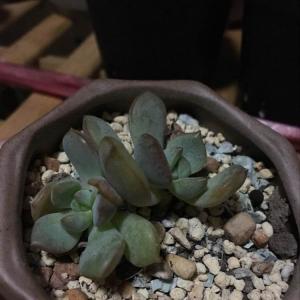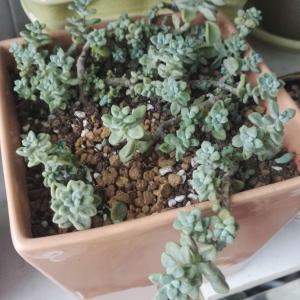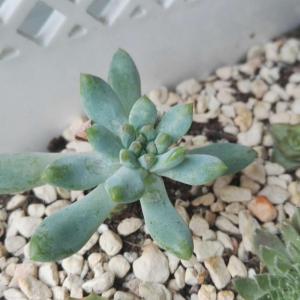文章
Miss Chen
2017年08月11日

Native to tropical Asia, the bamboo orchid (Arundina graminifolia or Arundina barbusifolia) grows to 8 feet with reedy stems and evergreen, grass-like leaves up to 1-foot long. Its 2- to 3-inch-wide flowers appear in clusters at the stems' tips in summer and autumn, each lasting for about three days. Those fragrant blooms vary in color from white to pinkish mauve with a darker purple lip. The Missouri Botanical Garden lists the bamboo orchid as perennial only in U.S. Department of Agriculture plant hardiness zones 11 through 12, but other sources consider it hardy as far north as USDA zone 9.

Indoor Position
Due to its large size and preference for high humidity, this orchid generally performs better outdoors than indoors. If you wish to try it as a houseplant, a clump – which usually contains three to five canes – needs a pot at least 12 inches in diameter. The bamboo orchid isn't picky about its medium and can be grown in regular potting soil, sphagnum moss or a more typical orchid mix of 1 part organic potting soil, 1 part coarse orchid bark and 1 part sand.
The bamboo orchid prefers full sun or at least partial sun, so position it on or near a south-facing windowsill where it receives temperatures between 60 and 80 degrees Fahrenheit.
Keep the air moist around it by placing it in a humid room, such as a bathroom, or setting it atop a humidity tray.
The plant is seldom bothered by pests or diseases.
Indoor Provisions
Water the orchid frequently enough that its medium or mix never dries out completely.
Fertilize it once a week from spring to fall with a 20-20-20 plant food, mixing 1/4 teaspoon of the crystals into 1 gallon of water. Always follow label instructions.
If possible, move the plant outdoors during the summer, setting it in shade at first, and gradually accustoming it to full sun.
Outdoor Position
If you wish to grow the bamboo orchid outdoors, place it in a protected, raised bed in full or partial sun. That bed should be filled with a humus-rich soil, which is about 2 parts compost, 1 part topsoil and 1 part coarse sand. Space the plants 1 foot apart in that bed and mulch it with 3 inches of shredded bark -- to keep the soil moist -- but don't allow the mulch to touch the plant's stems.

Outdoor Provisions
Water the bed about once every three days when there is no rain, or however often is necessary to prevent the soil from drying out.
Feed the orchids once every two months during spring and summer by pulling back the mulch and sprinkling the pellets of an organic fertilizer, such as 5-5-5 around the bases of the plants, using 1 cup for each 20 square feet of bed.
When all the buds on a cane have bloomed, snip that cane off near soil level with sterilized pruning tools.

Indoor Position
Due to its large size and preference for high humidity, this orchid generally performs better outdoors than indoors. If you wish to try it as a houseplant, a clump – which usually contains three to five canes – needs a pot at least 12 inches in diameter. The bamboo orchid isn't picky about its medium and can be grown in regular potting soil, sphagnum moss or a more typical orchid mix of 1 part organic potting soil, 1 part coarse orchid bark and 1 part sand.
The bamboo orchid prefers full sun or at least partial sun, so position it on or near a south-facing windowsill where it receives temperatures between 60 and 80 degrees Fahrenheit.
Keep the air moist around it by placing it in a humid room, such as a bathroom, or setting it atop a humidity tray.
The plant is seldom bothered by pests or diseases.
Indoor Provisions
Water the orchid frequently enough that its medium or mix never dries out completely.
Fertilize it once a week from spring to fall with a 20-20-20 plant food, mixing 1/4 teaspoon of the crystals into 1 gallon of water. Always follow label instructions.
If possible, move the plant outdoors during the summer, setting it in shade at first, and gradually accustoming it to full sun.
Outdoor Position
If you wish to grow the bamboo orchid outdoors, place it in a protected, raised bed in full or partial sun. That bed should be filled with a humus-rich soil, which is about 2 parts compost, 1 part topsoil and 1 part coarse sand. Space the plants 1 foot apart in that bed and mulch it with 3 inches of shredded bark -- to keep the soil moist -- but don't allow the mulch to touch the plant's stems.

Outdoor Provisions
Water the bed about once every three days when there is no rain, or however often is necessary to prevent the soil from drying out.
Feed the orchids once every two months during spring and summer by pulling back the mulch and sprinkling the pellets of an organic fertilizer, such as 5-5-5 around the bases of the plants, using 1 cup for each 20 square feet of bed.
When all the buds on a cane have bloomed, snip that cane off near soil level with sterilized pruning tools.
0
0
文章
Miss Chen
2017年08月10日

Rose bush plants come in containers, with fully developed root systems, or as bare-root plants, in boxes of peat to keep them moist. When you plant the rose bush in hardiness zone 8 depends on which type it is.

Hardiness Zone 8 Characteristics
USDA hardiness zone 8a has lows of 10 to 15 degrees Fahrenheit, and USDA hardiness zone 8b has lows of 15 to 20 degrees Fahrenheit. An example of a city in zone 8a is Dallas, Texas. Gainesville, Florida, is in zone 8b.
USDA Zone Ratings & Roses
Most roses are rated with a minimum zone of cold hardiness. For instance, a rose plant hardy to USDA zone 3 can withstand temperatures as low as -40 degrees Fahrenheit. Rose plants listed for USDA hardiness zone 8 can not withstand severe temperatures but do well in extreme heat.
Planting Times
Rose bushes should be planted when the soil is cool and moist. In regions within USDA hardiness zone 8, January is the best time to plant bare-root rose plants. Containerized rose plants, which have more developed root systems, can be planted year-round.


Hardiness Zone 8 Characteristics
USDA hardiness zone 8a has lows of 10 to 15 degrees Fahrenheit, and USDA hardiness zone 8b has lows of 15 to 20 degrees Fahrenheit. An example of a city in zone 8a is Dallas, Texas. Gainesville, Florida, is in zone 8b.
USDA Zone Ratings & Roses
Most roses are rated with a minimum zone of cold hardiness. For instance, a rose plant hardy to USDA zone 3 can withstand temperatures as low as -40 degrees Fahrenheit. Rose plants listed for USDA hardiness zone 8 can not withstand severe temperatures but do well in extreme heat.
Planting Times
Rose bushes should be planted when the soil is cool and moist. In regions within USDA hardiness zone 8, January is the best time to plant bare-root rose plants. Containerized rose plants, which have more developed root systems, can be planted year-round.

0
0
文章
Miss Chen
2017年08月10日

Primroses (Primula polyanthus), an old-fashioned perennial popular in gardens for hundreds of years, is native to the Northern Hemisphere. Most primroses are hardy in U.S. Department of Agriculture plant hardiness zones 3 to 8. Over 400 species of the rosette-like plant grow both in the wild and cultivated in proper gardens, and one of the tricks gardeners learn early is that their primrose bed will last much longer if the plants are properly deadheaded.

Deadheading Primroses
Deadheading simply means grooming the plant. By removing the spent flowers, you prevent your plant from going to seed, and allow it to mature. Cutting back the spent flower stems also encourages new growth, so you'll see fresh flowers. Once your plants have started to thrive, a simple walk around the garden several times a week allows you to see how your primroses are progressing and whether you might need to clean up the flowers that are spent.
Make sure you sterilize your scissors or pruning shears with rubbing alcohol before using them to deadhead your primroses.
Start checking your garden in late spring.
Carry a pair of scissors or a small pair of pruning shears in your pocket for the task. Some gardeners prefer to simply pinch away the spent flowers between thumb and forefinger, but sharp scissors make it easier to snip away the dead flower and leaves.
Wear rubber gloves -- some people might be allergic to certain varieties of plants. It also curbs the spread of disease if your naturally oily fingers are protected. Certain floral diseases easily spread when fingers flit from one flower to another.
Look for the flowers that have begun to fade or are drying out.
Reach down to the base of the flower stalk and hold the dead flower gently.
Bend the flower to expose the stem, and then either pinch or snip the dead flower away from the plant.
It's wise to carry a small bag or wear an apron and drop the dead flowers into the bag or apron rather than on the ground. You can dump your deadheaded materials into a recycling pile when you're done with your task.
Because too much water will rot primroses, check them occasionally and clip off any yellow or rotten lower leaves you see around the base of the plant. Removing rotten leaves promotes new growth. Your primrose bed might seem a bit droopy after you deadhead and trim old growth, but you'll be rewarded when new buds start to arrive.
If primroses get too wet, they can develop conditions like crown or root rot and become susceptible to garden bugs, like aphids or spiders.
Once your plants stop blooming, pull the primroses from the ground or your pots, and put them into containers until fall. The best soil is gritty and humus-rich. Keep your containers in a sheltered spot, and keep the plants moist but not wet.

Growing Primroses
You can grow primroses from seed or purchase your plants from a grower. If you choose to grow them from seed, be aware that the seeds are exceptionally small and it is difficult for the novice gardener to be successful starting these plants from seed.
Most primula varieties flower reliably and are easy to grow. Plant them in sun or partial shade, and choose an area or pot that provides good drainage. Primroses don't like to be wet. If you can shelter them, you'll have very happy plants.
Offering your plants liquid fertilizer every two weeks or so will encourage them to produce fresh buds and create a beautifully flowering plant.
Varieties
Most of the 450+ species of the genus primula like cooler weather and will not tolerate midsummer heat. They come in every color of the rainbow and the species names span the alphabet.
The varieties are distinguished by their rosette of leaves that resemble the leaves of a head of lettuce. In the center of the rosette are the flowers. Each flower has five petals joined at the base. Flowers appear on leafless stalks. Common colors include white, red, blue, yellow, purple and cream, but some species also produce bicolored flowers.

Deadheading Primroses
Deadheading simply means grooming the plant. By removing the spent flowers, you prevent your plant from going to seed, and allow it to mature. Cutting back the spent flower stems also encourages new growth, so you'll see fresh flowers. Once your plants have started to thrive, a simple walk around the garden several times a week allows you to see how your primroses are progressing and whether you might need to clean up the flowers that are spent.
Make sure you sterilize your scissors or pruning shears with rubbing alcohol before using them to deadhead your primroses.
Start checking your garden in late spring.
Carry a pair of scissors or a small pair of pruning shears in your pocket for the task. Some gardeners prefer to simply pinch away the spent flowers between thumb and forefinger, but sharp scissors make it easier to snip away the dead flower and leaves.
Wear rubber gloves -- some people might be allergic to certain varieties of plants. It also curbs the spread of disease if your naturally oily fingers are protected. Certain floral diseases easily spread when fingers flit from one flower to another.
Look for the flowers that have begun to fade or are drying out.
Reach down to the base of the flower stalk and hold the dead flower gently.
Bend the flower to expose the stem, and then either pinch or snip the dead flower away from the plant.
It's wise to carry a small bag or wear an apron and drop the dead flowers into the bag or apron rather than on the ground. You can dump your deadheaded materials into a recycling pile when you're done with your task.
Because too much water will rot primroses, check them occasionally and clip off any yellow or rotten lower leaves you see around the base of the plant. Removing rotten leaves promotes new growth. Your primrose bed might seem a bit droopy after you deadhead and trim old growth, but you'll be rewarded when new buds start to arrive.
If primroses get too wet, they can develop conditions like crown or root rot and become susceptible to garden bugs, like aphids or spiders.
Once your plants stop blooming, pull the primroses from the ground or your pots, and put them into containers until fall. The best soil is gritty and humus-rich. Keep your containers in a sheltered spot, and keep the plants moist but not wet.

Growing Primroses
You can grow primroses from seed or purchase your plants from a grower. If you choose to grow them from seed, be aware that the seeds are exceptionally small and it is difficult for the novice gardener to be successful starting these plants from seed.
Most primula varieties flower reliably and are easy to grow. Plant them in sun or partial shade, and choose an area or pot that provides good drainage. Primroses don't like to be wet. If you can shelter them, you'll have very happy plants.
Offering your plants liquid fertilizer every two weeks or so will encourage them to produce fresh buds and create a beautifully flowering plant.
Varieties
Most of the 450+ species of the genus primula like cooler weather and will not tolerate midsummer heat. They come in every color of the rainbow and the species names span the alphabet.
The varieties are distinguished by their rosette of leaves that resemble the leaves of a head of lettuce. In the center of the rosette are the flowers. Each flower has five petals joined at the base. Flowers appear on leafless stalks. Common colors include white, red, blue, yellow, purple and cream, but some species also produce bicolored flowers.
0
1
文章
Miss Chen
2017年08月09日

Shade-loving hostas (Hosta spp.) produce their signature foliage in various colors, patterns, sizes and textures. These plants do best in the cooler climates of U.S. Department of Agriculture plant hardiness zones 3 through 8. Slugs are the usual culprits for holes chewed in hosta leaves, although other pests or factors can also cause this damage. Providing the hostas with good care and following excellent sanitation practices around the hostas will help to prevent or minimize the appearance of holes in the hosta leaves.

Step 1
Space plants well at planting or transplant or divide hostas so that there is good air circulation around the hosta foliage. Crowded hostas that are constantly damp are prone to fungal problems like anthracnose. Anthracnose appears as white to tan leaf spots with a dark border that often lose their center before the entire leaf develops a torn or tattered appearance.
Step 2
Keep debris, like excessive mulch, leaf litter, boards, stones and bricks, away from the hostas and thin out any dense ground cover plants near the hostas. Slugs feed on hostas at night and need a damp environment to hide in during the day. Holes caused by slugs are irregular but have a smooth edge. Cutworms chew long, oval holes between hosta leaf veins.
Step 3
Inspect the hosta plants and surrounding area at night with a flashlight, looking for slugs and cutworms. Pick off any pests you find and drown them in a bucket of soapy water.

Step 4
Sprinkle diatomaceous earth over the ground around the hostas. Reapply this material regularly and after each rainfall to ensure it remains effective. Diatomaceous earth will scratch the outer or protective layer of slugs and other pests, causing the pests to dry out and die.
Step 5
Drape a fabric sheet or similar material over the hostas whenever hail or out-of-season frosts are expected. Prop the cloth up with sticks, stakes or boards, so it is not directly in contact with the hosta. Hail damage to hosta leaves appears as holes with jagged edges and an overall torn or tattered appearance.

Step 1
Space plants well at planting or transplant or divide hostas so that there is good air circulation around the hosta foliage. Crowded hostas that are constantly damp are prone to fungal problems like anthracnose. Anthracnose appears as white to tan leaf spots with a dark border that often lose their center before the entire leaf develops a torn or tattered appearance.
Step 2
Keep debris, like excessive mulch, leaf litter, boards, stones and bricks, away from the hostas and thin out any dense ground cover plants near the hostas. Slugs feed on hostas at night and need a damp environment to hide in during the day. Holes caused by slugs are irregular but have a smooth edge. Cutworms chew long, oval holes between hosta leaf veins.
Step 3
Inspect the hosta plants and surrounding area at night with a flashlight, looking for slugs and cutworms. Pick off any pests you find and drown them in a bucket of soapy water.

Step 4
Sprinkle diatomaceous earth over the ground around the hostas. Reapply this material regularly and after each rainfall to ensure it remains effective. Diatomaceous earth will scratch the outer or protective layer of slugs and other pests, causing the pests to dry out and die.
Step 5
Drape a fabric sheet or similar material over the hostas whenever hail or out-of-season frosts are expected. Prop the cloth up with sticks, stakes or boards, so it is not directly in contact with the hosta. Hail damage to hosta leaves appears as holes with jagged edges and an overall torn or tattered appearance.
0
0
文章
Colour_
2017年08月09日

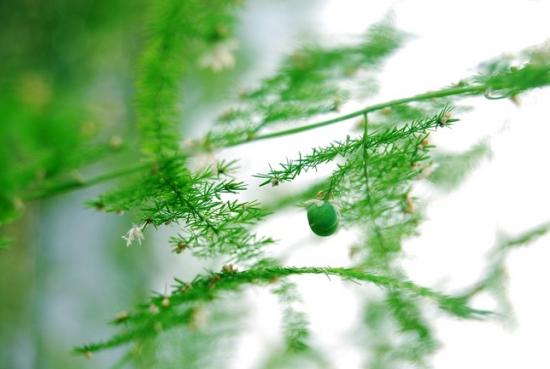
播种繁殖#文竹 ,先要培养种株采收种子。7—8月将当年牛苗移栽在头号桶盆,用培养土上盆,充分腐熟的麻酱渣作底肥,这样当年的苗就可生长到50厘米以上。来年春季可换二缸子盆,施马掌片作底肥,每星期可施腐熟的麻酱渣水2次。
夏季应放阴凉通风处,高温时节停止施肥。秋末人室,这时植株已高1米以上,需要绑扎竹架。如在温室一角挖1个长方形的池子(长100厘米,宽50厘米,深60厘米),池内放人培养土,并施腐熟麻酱渣1千克和过磷酸钙250克作基肥,把文竹移植在池内,沿池长搭1个长2―3米,高1.7米、宽1米的长方架,架子上每隔20厘米搭一根竹竿,把枝条均匀地引到架子上,夏季打开门窗,上盖苇帘,来年秋即可开花结籽。如没有温室可将文竹换入坯子盆,用培养土加马掌片和过磷酸钙作底肥,盆上用竹竿搭立架,来年也可开花结籽。
日常管理注意剔除过弱、过密的枝条,以保证通风,有利开花结籽。盆栽文竹开花期间要防备大风吹和雨淋,也不要浇大水,最好不要移动花盆以免掉花。种子发黑成熟后采收,在气温15℃以上时,用素面沙土播种,覆土厚2毫米,经常保持盆土湿润,1个月左右发芽,2个月就可分盆。上盆时,应注意将根盘旋于盆底,不要弄断。
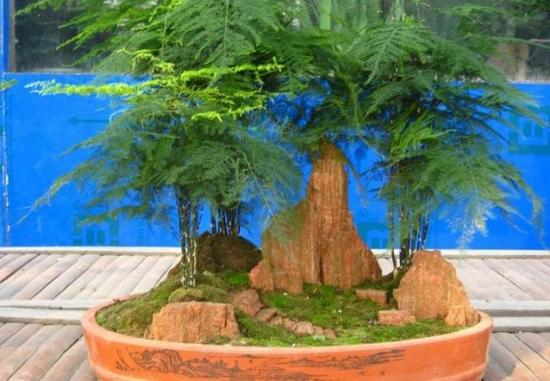
另:怎样矮化文竹使之小巧玲珑
首先,要适当控制肥水。第一年栽植的小文竹,要加强肥水,使其尽快成形观赏。到第二年就要开始控制肥水。尤其在春、夏、秋生长旺季,要控肥、控水。每月施1次稀淡液肥即可。水一定要做到见干再浇,干要干到盆土分离的程度,控水要适度。过干,枝叶易枯黄或干尖。所以,在控水期要加强叶面喷水,避免太阳直射。
其次是要控制个体枝叶生长规模。一般每盆有5~10个丛生枝叶,上下错落或在同一水平面均匀分布。枝叶过多,则会出现拥挤、紊乱,不利发挥每片叶的观赏效果。所以,2~3年应分株换盆1次,这样既可调控枝叶规模,又可更新繁殖,一举几得。分株的方法最好是将文竹带土倒出后,放在水中将土浸散,冲出泥土,使根系裸露。然后看准根系与枝叶的关系,每3~4枝带根切开,剪除老根、腐根后,栽到10~12厘米的小盆中浇透水遮荫养护。分盆后的文竹如出现偏冠,应通过植物的趋光原理和萌生的新枝来调整。
最后是通过修剪、摘心控制疯长。攀缘性徒长枝,可以培养成开花结籽的主蔓。但是,作为矮化观赏文竹,它起着扰乱株形的作用。除了在头一二年可以通过在展叶前摘心或展叶后补截,使之早日成形外,应该从基部疏剪掉。对成形后的文竹应随时疏剪掉徒长枝、老枝、枯黄枝和细弱畸形枝,使其保持一定数量的枝叶。
通过以上方法,定会使你养的文竹层次分明,呈现出云片般的盆景形态。
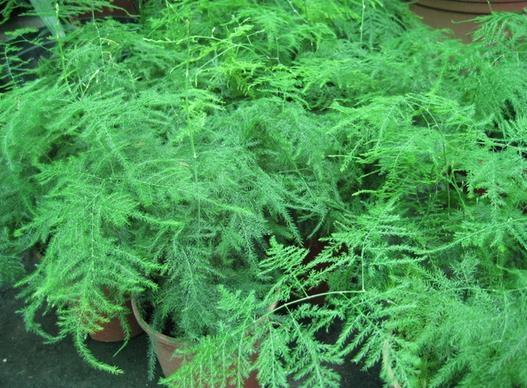
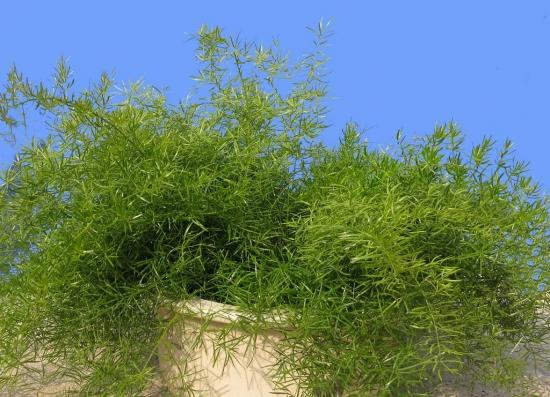
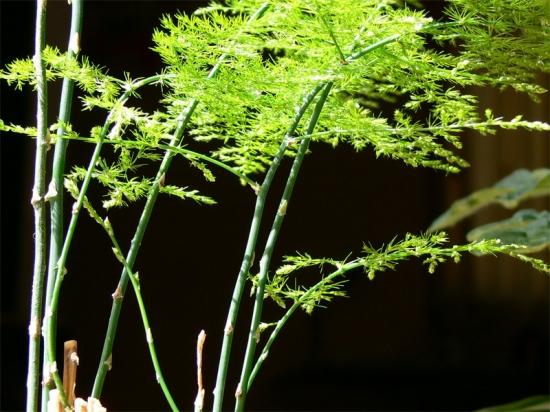
0
1
求助
Lucky Coyote
2017年08月09日

I'm curious if this is an Aloe Vera or another Aloe species. It's really spiky and about 8 inches tall
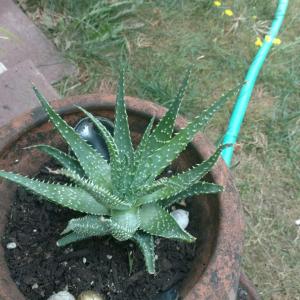

1
0
Camden Crace:It is either that or a twilight zone aloe.
Camden Crace:@Aurora I think it is an aloe haworthioides. Or haworthia leaved aloe.
Aurora:I know it's not aloe Vera but I do not know what type of aloe it is 😕
杨宝宝:讲中文



